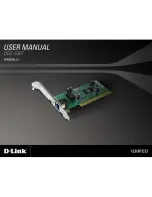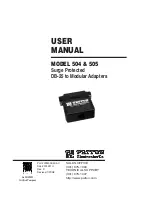
Broadcom NetXtreme Ethernet Adapter • Diagnostic User’s Guide
page 38
Broadcom Confidential and Proprietary
9 Same System Send/Respond Test
During a send/respond test two Broadcom Ethernet devices in the same system are
connected via a CAT5 (RJ45) cable and data is transmitted and received across the cable. In
the above setup one device is the device under test (DUT) and the other is the reference
device. Any Broadcom device that is supported by diagnostics can be used as the DUT or
the reference device.
9.1 Identifying a reference device
A reference device needs to be identified in order to test a DUT against the reference
device. The user can use the “b57diag –dids” command to display all the devices in the
system. Each device is assigned a number that is displayed on the screen in the first column
just before the device type. A user selects the number of the device that is to be used as the
reference and uses this number to test the DUT as described in the next section.
9.2 Testing the DUT against the reference device
After identifying the reference device, as described in the previous section, the user can test
the DUT by running “b57diag –rf 0 –c 1 –t abcd –T d3”. Each of the previous options are
described in the table below (details of each option are provided in the “Command line
option parameters” section above).
-rf 0
Identifies the reference device as device 0.
-c 1
Identifies the DUT as device 1.
–t abcd
Disables all tests (Disable all tests in group a, b, c, and d).
–T d3
Perform the external loopback test that will transmit data from the DUT to the
reference device, via the CAT5 cable, then the reference device will receive
the data and transmit it back, via the CAT5 cable, to the DUT which will
verify the received data.
9.3 Other Options for the Send/Respond test
The following options can be used with the send/respond test (details of each option are
provided in the “Command line option parameters” section above).
-lbspd t/h/g
Selects any combination of line speed to run the loopback test (by
default runs all line speeds).
–lbe g:h:t
Selects the number of packets to send during the loopback test (g, h & t
are the 1000/100/10 megabit packet counts respectively) (default values
are g=2000, h=1000, t=600). It is mandatory that all packets counts are
entered with this command line switch.















































